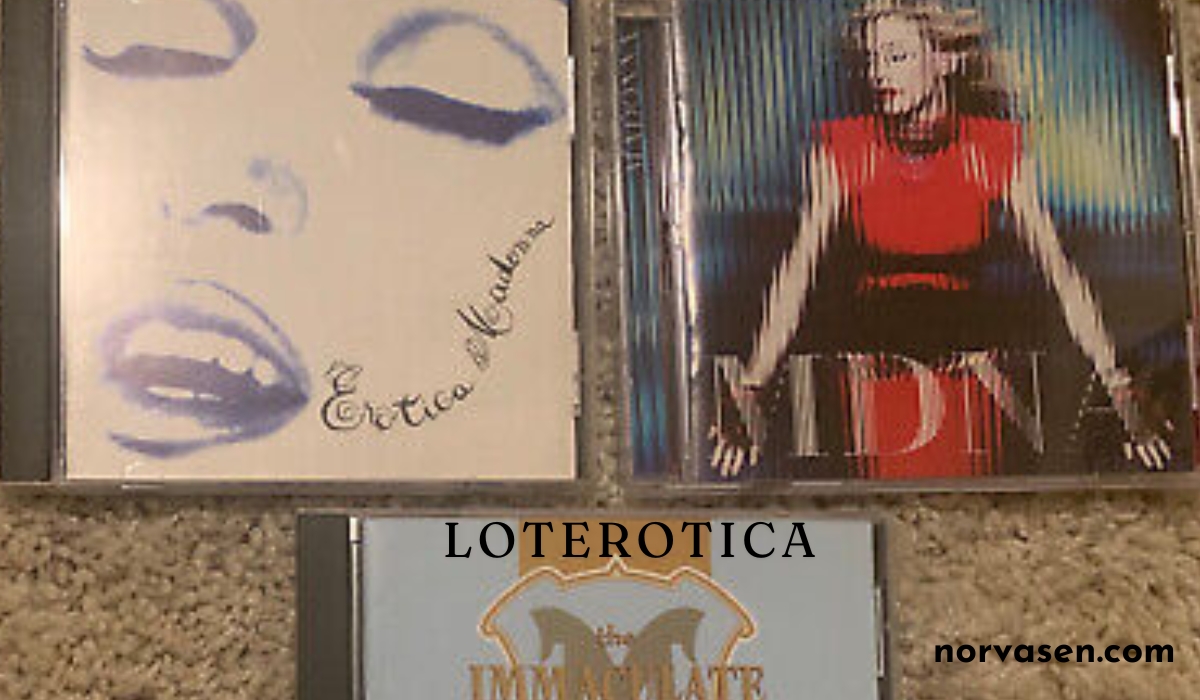Blog
Loterotica Meaning | Pop Culture: An In-Depth Exploration

Introduction to Loterotica
Literotica—a term derived from “literature” and “erotica”—refers to erotic literature that is often explicit and intended to evoke sexual arousal or explore sexual themes. Though its roots extend deep into literary history, literotica has evolved into a distinct genre with significant influence on both literature and pop culture. In this post, we will explore the meaning of literotica, its evolution, impact on literature and popular culture, notable works and authors, its transformation in the digital age, societal perceptions and criticisms, and predictions for its future.
Evolution of Literotica
Early Origins
Literotica’s origins can be traced back to ancient civilizations where erotic themes were common in mythology, poetry, and art. Works like the Indian Kama Sutra and Roman poet Ovid’s Ars Amatoria are early examples of literature that explore sexual behavior and love. These works, though not always explicit by today’s standards, were groundbreaking in their open discussion of human sexuality.
The Middle Ages and Renaissance
In the Middle Ages, erotica took a more subdued form, often cloaked in allegory and metaphor due to strict moral codes. However, the Renaissance saw a resurgence of interest in humanism and the exploration of human desires. Figures like Pietro Aretino, often regarded as the father of modern pornography, used literature to delve into erotic themes unabashedly.
The Enlightenment and Victorian Era
The Enlightenment further expanded the boundaries of literotica, with authors like Marquis de Sade pushing the limits of societal norms. In contrast, the Victorian era experienced a dichotomy where public morality was highly conservative, but underground literature thrived. Literary works such as My Secret Life and Fanny Hill (also known as Memoirs of a Woman of Pleasure) became iconic, though controversial, contributions to the genre.
20th Century to Contemporary Literotica
The 20th century marked a significant shift with the sexual revolution of the 1960s and 70s. Authors like Anaïs Nin and Henry Miller brought literotica to mainstream attention, challenging censorship laws and societal norms. In contemporary times, the genre has diversified and expanded, with digital platforms enabling widespread access and participation in the creation of literotica.
Impact on Literature and Pop Culture
Literary Influence
Literotica has profoundly impacted literature by pushing the boundaries of what is considered acceptable content. It has allowed authors to explore complex themes related to sexuality, identity, and power dynamics. Works such as Lolita by Vladimir Nabokov and Fifty Shades of Grey by E.L. James have sparked discussions about the literary merit and moral implications of erotic content.
Pop Culture Influence
In pop culture, literotica has influenced various media, including film, television, and music. Movies like 9½ Weeks and Secretary have brought erotic literature to the big screen, often blurring the lines between art and pornography. Television series like Sex and the City and Outlander have incorporated literotica elements, contributing to their popularity and cultural significance.
Societal Influence
Literotica has also played a role in shaping societal attitudes towards sex and sexuality. By normalizing discussions about erotic pleasure and desire, it has contributed to greater sexual openness and acceptance. However, it has also sparked debates about consent, exploitation, and the objectification of bodies.
Notable Works and Authors
Influential Works
Some of the most influential works in literotica include:
- Fanny Hill by John Cleland: Often cited as the first English prose pornography, this novel explores the life of a young woman who becomes a sex worker.
- Story of O by Pauline Réage: A seminal work in BDSM literature, this novel has influenced countless other works and discussions about consensual power dynamics.
- Delta of Venus by Anaïs Nin: A collection of erotic short stories that delve into the complexities of sexual desire and relationships.
Pioneering Authors
Key authors who have shaped the genre include:
- Anaïs Nin: Known for her lyrical and introspective style, Nin’s works have elevated erotica to the level of literary art.
- Henry Miller: His candid exploration of human sexuality in works like Tropic of Cancer challenged censorship laws and redefined literary boundaries.
- E.L. James: Her Fifty Shades series brought BDSM themes into mainstream conversation, highlighting the commercial viability of erotica.
The Digital Age and Literotica
Online Platforms
The advent of the internet has revolutionized the distribution and consumption of literotica. Websites like Literotica.com and fan fiction communities like Archive of Our Own (AO3) provide platforms for writers to share their works with a global audience. These platforms have democratized literotica, allowing amateur writers to contribute alongside established authors.
E-Books and Self-Publishing
E-books and self-publishing platforms like Amazon Kindle Direct Publishing have enabled writers to bypass traditional publishing gatekeepers. This has led to an explosion of literotica content, with niche genres and subgenres catering to diverse tastes and fantasies.
Multimedia Integration
The digital age has also seen literotica expand beyond text. Audiobooks, interactive stories, and multimedia projects incorporate sound, visuals, and user interaction to create immersive erotic experiences.
Societal Perceptions and Criticisms
Changing Attitudes
Societal attitudes towards literotica have evolved over time. While once considered taboo, erotic literature is now more widely accepted as a legitimate form of artistic expression. However, it remains controversial, particularly when it challenges societal norms or explores contentious themes.
Ethical Considerations
Critics argue that literotica can perpetuate harmful stereotypes, objectify bodies, and blur the lines between consensual and non-consensual acts. These criticisms highlight the importance of ethical writing and consumption practices, including clear distinctions between fantasy and reality and respect for consent and agency.
Feminist Perspectives
Feminist perspectives on literotica are diverse. Some feminists view it as a form of sexual liberation and empowerment, particularly when it centers women’s desires and agency. Others criticize it for perpetuating patriarchal and heteronormative narratives. The genre’s ability to provoke such varied responses underscores its complexity and significance.
The Future of Literotica
Technological Innovations
As technology continues to evolve, so too will loterotica. Virtual reality (VR) and augmented reality (AR) hold the potential to create even more immersive erotic experiences. AI-generated content could also play a role, although it raises questions about originality and authenticity.
Mainstream Acceptance
The increasing mainstream acceptance of loterotica suggests that it will continue to play a significant role in both literature and pop culture. As societal attitudes towards sex and sexuality become more open, loterotica may increasingly be seen as a legitimate and valuable form of artistic expression.
Diversity and Inclusion
The future of loterotica will likely see greater diversity and inclusion, with more voices from marginalized communities contributing to the genre. This will enrich loterotica by bringing new perspectives and experiences to the forefront.
YOU MAY ALSO LIKE
Unraveling Kääntäh: Language, Culture, and Traditions
Conclusion
Literotica is a dynamic and multifaceted genre that has evolved significantly over time. From its early origins to its contemporary forms, it has had a profound impact on literature and pop culture. Notable works and pioneering authors have shaped the genre, while the digital age has revolutionized its distribution and consumption. Societal perceptions of literotica are complex and varied, reflecting broader attitudes towards sex and sexuality. As we look to the future, it is clear that loterotica will continue to be a significant and influential genre, offering valuable insights into human desire and expression.
Whether you are a literature enthusiast, a pop culture fan, or a bookworm, exploring the world of loterotica can be a fascinating and enriching experience. By understanding its history, impact, and future potential, we can appreciate its enduring significance and the role it plays in our cultural landscape.
For those who wish to delve deeper into the world of loterotica, we invite you to join our community of literature enthusiasts and pop culture fans. Share your favorite works, discuss your thoughts, and engage with others who share your passion for this intriguing genre.
Frequently Asked Questions
- What is literotica?
Literotica is a genre of literature that explores erotic themes and narratives, often delving into sexual desire and relationships.
- Who are some pioneering authors in literotica?
Notable authors include Anaïs Nin, Henry Miller, and E.L. James, each of whom has significantly influenced the genre’s development.
- How has the internet impacted literotica?
The internet has revolutionized loterotica by providing platforms for writers to share their works globally, democratizing access and enabling self-publishing.
- What are some ethical considerations in literotica?
Ethical considerations include avoiding harmful stereotypes, ensuring clear distinctions between fantasy and reality, and respecting consent and agency.
- What is the future of literotica?
The future of loterotica is poised for growth, with technological innovations like VR and AI, increased mainstream acceptance, and greater diversity and inclusion.
Blog
Welcome to Look What Mom Found-https:// lookwhatmomfound.com- Your Ultimate Family Blog & Daily Life Hacks Resource

Introduction https:// lookwhatmomfound.com
Welcome to Look What Mom Found, your go-to resource for everything related to family life and daily hacks! Founded by Melinda and Rob, this blog is more than just a collection of articles—it’s a community where parents can find support, inspiration, and practical solutions to everyday challenges. Whether you’re seeking parenting tips, delicious recipes, travel advice, or honest product reviews, Look What Mom Found is here to help navigate the wonderful journey of family life.
Meet the Founders: Melinda and Rob
Melinda and Rob started Look What Mom Found with a shared passion for helping families thrive. Melinda, a former teacher, and Rob, an engineer, found themselves constantly sharing tips and advice with friends and family. They realized there was a need for a platform where their insights could reach a broader audience. With two young children of their own, they understand the joys and struggles of parenthood firsthand. Their goal is to create a supportive community where parents can learn from each other’s experiences and celebrate the everyday moments that make family life special.
Parenting Tips
Expert Parenting Tips for Every Stage
Parenting is a journey filled with different stages, each presenting its own unique challenges and rewards. At Look What Mom Found, we offer expert advice tailored to each phase of your child’s development.
Newborn Care
Welcoming a newborn into your family is a joyous occasion but can also be overwhelming for new parents. Here are some essential tips to help you navigate the early days:
- Establishing a Routine: Setting a predictable schedule can help both parents and babies adjust to life at home.
- Feeding and Sleeping Tips: Advice on breastfeeding, bottle feeding, and establishing healthy sleep habits.
- Bonding Activities: Ways to bond with your newborn through skin-to-skin contact, baby massage, and gentle play.
Toddler Troubles
Toddlers are curious explorers who can test boundaries and keep parents on their toes. Here are some strategies for common toddler challenges:
- Positive Discipline: Techniques for setting limits while promoting positive behavior.
- Potty Training: Tips for successful potty training and dealing with setbacks.
- Handling Tantrums: Ways to manage and prevent tantrums with patience and understanding.
Teenage Challenges
Navigating the teenage years requires patience, communication, and a supportive environment. Here’s how to tackle some common teenage issues:
- Effective Communication: Tips for fostering open communication with your teen.
- Setting Boundaries: Establishing rules and expectations while respecting your teen’s need for independence.
- Peer Pressure and Social Media: Guidance on helping your teen navigate friendships and social media responsibly.
Daily Life Hacks
Daily Life Hacks to Simplify Your Family Life
Managing a busy family schedule while keeping a household running smoothly can feel like a juggling act. Look What Mom Found shares practical life hacks to make daily routines easier and more efficient.
Home Organization
A clutter-free home can reduce stress and create a more peaceful environment for your family. Try these organization tips:
- Decluttering Strategies: How to simplify and organize belongings room by room.
- Storage Solutions: Creative ways to maximize storage space in small areas.
- Daily Cleaning Routine: Establishing a manageable cleaning schedule for maintaining cleanliness.
Time Management
Balancing work, school, extracurricular activities, and family time requires effective time management skills. Here’s how to make the most of your day:
- Prioritization Techniques: Identifying and prioritizing tasks to stay focused and productive.
- Family Calendar: Using a shared calendar to keep track of appointments, deadlines, and family events.
- Batch Cooking: Preparing meals in advance to save time during busy weekdays.
Budgeting Tips
Managing family finances is crucial for long-term stability and reducing financial stress. Consider these budgeting tips:
- Creating a Household Budget: Steps to create a budget that aligns with your family’s financial goals.
- Saving Strategies: Practical ways to save money on groceries, utilities, and entertainment.
- Teaching Kids About Money: Tips for instilling financial literacy in children through allowances and savings accounts.
Recipes
Delicious and Easy Family Recipes
Mealtime is an opportunity for families to come together and enjoy delicious food. Look What Mom Found shares a variety of recipes that are nutritious, easy to prepare, and loved by both kids and adults.
Quick Weeknight Dinners
When time is limited, these quick and easy dinner recipes are perfect for busy evenings:
- One-Pot Pasta: Recipes that require minimal cleanup and are ready in under 30 minutes.
- Sheet Pan Meals: Healthy and flavorful dishes that can be roasted together on a single pan.
- Instant Pot Favorites: Time-saving recipes that cook quickly under pressure.
Healthy Snacks
Nutritious snacks are essential for keeping energy levels up throughout the day. Try these tasty and wholesome options:
- Homemade Granola Bars: Recipes packed with oats, nuts, and dried fruits for a satisfying snack.
- Yogurt Parfaits: Layered with fresh fruits, nuts, and honey for a refreshing treat.
- Vegetable Dips: Pairing crunchy veggies with creamy dips like hummus or tzatziki.
Vegetarian Options
Whether you follow a vegetarian diet or simply enjoy meatless meals, these recipes are sure to please the whole family:
- Vegetarian Chili: Hearty and flavorful chili packed with beans, vegetables, and spices.
- Stuffed Bell Peppers: Delicious peppers filled with quinoa, black beans, corn, and cheese.
- Spinach and Mushroom Lasagna: Layers of pasta, ricotta cheese, and a savory tomato sauce.
Travel Tips
Family Travel Tips for Stress-Free Vacations
Traveling with kids can be challenging, but with the right preparation, it can also be incredibly rewarding. Look What Mom Found offers practical tips to make your family vacations memorable and stress-free.
Packing Essentials
Before you embark on your next adventure, make sure you have these essential items packed:
- Travel Documents: Passports, visas, and any necessary travel insurance documents.
- Medication and First Aid Kit: Prescriptions, over-the-counter medications, and basic first aid supplies.
- Entertainment for Kids: Books, games, and electronics to keep kids entertained during travel.
Traveling with Kids
Keep kids comfortable and entertained while traveling with these tips:
- Snack Packs: Pack healthy snacks and drinks to keep hunger at bay during long journeys.
- Travel Games and Activities: Simple games like scavenger hunts or coloring books to keep kids engaged.
- Rest Breaks: Plan regular breaks to stretch, use restroom facilities, and let kids burn off energy.
Budget Travel
Explore the world without breaking the bank with these budget-friendly travel strategies:
- Off-Season Travel: Taking advantage of lower prices and fewer crowds during shoulder seasons.
- Accommodation Options: Consider family-friendly hostels, vacation rentals, or budget hotels.
- Local Cuisine: Sampling affordable local dishes and markets for authentic dining experiences.
Product Reviews
Honest Reviews of Family-Friendly Products
Choosing the right products for your family can make a big difference. Look What Mom Found provides unbiased reviews of products designed to enhance family life.
Baby Gear
From strollers to car seats, here are some of our top recommendations for essential baby gear:
- Convertible Car Seats: Reviews of car seats that grow with your child from infancy through toddlerhood.
- Diaper Bags: Stylish and functional bags for keeping baby essentials organized on the go.
- Baby Monitors: High-tech monitors with features like video streaming and temperature sensors.
Home Gadgets
Discover innovative gadgets that can simplify life at home for modern families:
- Smart Home Devices: Reviews of smart thermostats, lighting systems, and security cameras.
- Kitchen Appliances: Must-have appliances like multi-cookers and air fryers for easy meal preparation.
- Cleaning Tools: Efficient vacuum cleaners and steam mops to keep your home clean and tidy.
Educational Toys
Encourage learning and development with these educational toys and games:
- STEM Toys: Hands-on kits that teach science, technology, engineering, and math concepts through play.
- Board Games: Family-friendly games that promote teamwork, critical thinking, and creativity.
- Books for Kids: Reviews of children’s books that inspire imagination and a love for reading.
Giveaways
Exciting Giveaways for Our Readers
At Look What Mom Found, we love giving back to our community! Participate in our current giveaways for a chance to win amazing prizes.
How to Enter
Entering our giveaways is easy! Simply follow the instructions provided on each giveaway post, which may include actions like subscribing to our newsletter, following us on social media, or sharing the giveaway with friends.
YOU MAY ALSO LIKE
The Top 4 Household Tasks are Especially Difficult for Busy Moms
Conclusion
At Look What Mom Found, we strive to be your go-to resource for all things family and life hacks. Whether you’re seeking parenting tips, delicious recipes, travel advice, or honest product reviews, our goal is to simplify and enhance your family’s daily life. Join our community today and embark on a journey of discovery and support with us!
FAQs
1. What topics does Look What Mom Found cover?
- Look What Mom Found covers a wide range of topics including parenting tips, family recipes, travel tips, product reviews, and daily life hacks.
2. Who are the founders of Look What Mom Found?
- Melinda and Rob are the passionate founders of Look What Mom Found, dedicated to sharing their experiences and tips for family life.
3. How can I participate in Look What Mom Found giveaways?
- Keep an eye on our blog for current and upcoming giveaways. Follow the instructions provided in each giveaway post to enter and stand a chance to win exciting prizes.
4. Are the product reviews on Look What Mom Found unbiased?
- Yes, our product reviews are honest and unbiased, aiming to provide helpful insights into family-friendly products like baby gear, home gadgets, and educational toys.
5. How can I contact Look What Mom Found for inquiries?
- You can contact us through our website’s contact form or connect with us on social media. Visit our Contact Us page for more details.
Blog
Navigating DVC Availability during Peak Seasons

Are you struggling to secure Disney Vacation Club (DVC) reservations during peak times? You’re not alone. DVC availability can be a challenge, especially during holidays and school vacations.
In this blog, we will explore strategies to improve your chances of booking your dream vacation. Learn the best times to check for openings and how to maximize your membership points.
Get insider tips from seasoned DVC members. Let’s make your next Disney trip unforgettable!
Booking Strategies for High-Demand Times
It’s important to book as early as possible to increase your chances of getting the reservation you want. Members of DVC can book their vacation club rentals 11 months in advance and other resorts 7 months in advance.
So, planning is very important, especially for a very crowded Disney destination that a lot of people want to visit. You can also improve your chances of success during busy times by being flexible with dates and room types.
Leveraging Waitlists Effectively
If the dates you want are taken, the waitlist system can be very helpful. You may still be able to get a reservation if someone cancels by putting your name on a waitlist.
You should stay on more than one waitlist. Keep a close eye on your waitlists and be ready to confirm right away if a spot opens up.
Exploring Alternative Resort Options
It’s a good idea to check out other DVC resorts because your first choice might not be available during busy times. Each resort has its activities and features that can make your vacation just as fun.
One way to get more choices and make the booking process easier is to think about other options. If you look into these alternatives, you might find some real gems.
Planning for Special Events and Holidays
Peak seasons frequently align with holidays and other occasions at Disney parks, increasing competition for available dates. If you want to visit during a busy time, like Mickey’s Not-So-Scary Halloween Party or Epcot’s Food & Wine Festival, make your plans as far in advance as you can. Finding the ideal times to make your reservations can be made easier by being aware of the timetables for these events.
Using Points Strategically
Making good use of your DVC points can help you get better availability during peak season. Instead of making one long reservation, you might want to split your stay up into several shorter ones.
With this method, you may also be able to stay at more than one resort during your trip. Also, keep an eye on the DVC point charts and the seasons, because the number of points you need changes with the seasons.
Checking Resale Listings
If you are struggling to find availability through the traditional DVC booking system, it may be worth checking out timeshare market resale listings. Resale points can sometimes be more flexible and cost-effective. Many online platforms offer all DVC resale listings that can supplement your existing points or give you access to resorts that are otherwise booked out.
Unlocking Hidden DVC Availability Secrets
It can be hard to figure out DVC availability during busy times, but you can do it if you know what to do. Plan, make good use of waitlists, and be open to changing your plans.
It’s important to look into other resorts and know when special events are happening. You can also improve your chances by making good use of your points and looking at resale listings.
Remember that careful planning and creativity can help you find hidden DVC options. Have a great vacation!
Did you like this guide? Please browse our website for more!
Blog
Is the Universe Testing Me to See If I’m Ready? Understanding the Signs and How to Respond

Introduction Is the Universe Testing Me to See If I’m Ready
Ever wondered if the universe is throwing obstacles your way to see if you’re prepared for your dreams? If so, you’re not alone. Many spiritual seekers ponder whether the challenges they face are tests designed by the universe to ensure they’re ready for what they desire. Understanding these tests is crucial for personal growth and achieving your goals. This post will guide you through the signs that the universe might be testing you, how to recognize and interpret these tests, and how to respond effectively.
What Does It Mean for the Universe to Test You?
Definition
The idea that the universe tests us is rooted in the belief that life isn’t random. Instead, it’s influenced by a higher power, destiny, or spiritual forces that help us grow and prepare for our desires. These tests might manifest as challenges, setbacks, or emotional triggers, all designed to build your resilience and readiness.
Purpose
Why would the universe test you? Think of it as a cosmic quality check. Just like a diamond undergoes extreme pressure to form, you might face tough situations to transform into your best self. The universe wants to ensure you’re really ready for the next big thing in your life, whether it’s a new job, a relationship, or a personal milestone.
Common Misconceptions
It’s easy to misinterpret these tests as punishment or bad luck. However, the universe isn’t out to get you. It’s not about making your life harder just for the fun of it. Instead, these experiences are opportunities for growth. They’re like training sessions designed to strengthen your mind, body, and spirit.
Signs That the Universe Is Testing You
Unexpected Challenges
One of the most evident signs is the sudden appearance of obstacles. You might be cruising along when, bam, a problem arises out of nowhere. These unexpected challenges can be anything from a sudden job loss to an argument with a loved one. They force you to pause and re-evaluate your path.
Repeated Patterns
Have you noticed the same scenarios playing out repeatedly? Maybe you keep encountering the same type of difficult boss at every job, or you continually find yourself in unhealthy relationships. These recurring patterns are likely the universe’s way of highlighting areas that need your attention.
Emotional Triggers
Strong emotional reactions can also indicate that you’re being tested. These might include feelings of anger, sadness, or anxiety that seem disproportionate to the situation. These emotions are signals to dig deeper and understand what’s really going on inside you.
Synchronicities
Meaningful coincidences, or synchronicities, are another sign. These might be random events or encounters that seem too perfect to be mere chance. They often act as nudges from the universe, guiding you towards or away from something.
How to Recognize and Interpret These Tests
Self-Reflection
Taking time for introspection is essential. By reflecting on your experiences and emotional responses, you can start to see patterns and understand what the universe is trying to teach you. This might involve asking yourself questions like, “Why does this upset me so much?” or “What can I learn from this situation?”
Journaling
Keeping a journal can be incredibly helpful for tracking these patterns and gaining insights. Write down your thoughts, feelings, and experiences regularly. Over time, you’ll start to see connections and understand the lessons the universe is presenting to you.
Seeking Guidance
Sometimes, you might need external help. Whether it’s from a mentor, spiritual guide, or therapist, seeking advice can provide you with different perspectives that you might not have considered. These individuals can help you interpret the signs and offer practical advice on how to proceed.
Meditation and Mindfulness
Practices like meditation and mindfulness can help you stay grounded and aware of the present moment. They allow you to tune into your inner self and the universe’s messages. Over time, these practices can improve your ability to recognize and interpret the tests you’re facing.
How to Respond to the Universe’s Tests
Stay Positive
Maintaining a positive mindset is crucial. It might be challenging, especially when you’re in the thick of it, but positivity can significantly impact how you handle these tests. Remember, every challenge is an opportunity for growth and learning.
Adaptability
Flexibility and openness to change are essential. Life is unpredictable, and the universe’s tests often require you to adapt. Being rigid in your thinking or actions can hinder your progress. Instead, try to see every situation as a chance to learn something new and improve yourself.
Learning and Growth
View each test as a lesson. What is the universe trying to teach you? By focusing on the learning aspect, you can turn even the most challenging situations into valuable growth experiences. This shift in perspective can make a significant difference in how you handle these tests.
Taking Action
Finally, taking proactive steps to demonstrate your readiness and commitment is crucial. This might involve making changes in your behavior, setting new goals, or taking steps towards your desires. The universe rewards action, so show that you’re ready for what you want.
Real-Life Examples and Testimonials
Case Studies
Consider the story of Sarah, who faced numerous setbacks in her career. Despite her qualifications, she kept missing out on promotions. Instead of giving up, she used these experiences to reflect on her approach and improve her skills. Eventually, she landed her dream job, realizing that the universe was preparing her for this opportunity all along.
Personal Anecdotes
John, another example, found himself in a cycle of unhealthy relationships. Each breakup left him feeling defeated. However, through self-reflection and seeking guidance, he recognized the patterns and worked on his self-worth. Today, he’s in a loving relationship, grateful for the tests that led him to his partner.
Expert Insights
According to spiritual leader Deepak Chopra, “Challenges are gifts that force us to search for a new center of gravity. Don’t fight them. Just find a new way to stand.” His words highlight the importance of viewing tests as opportunities for growth and transformation.
Common Questions and Answers
Why does the universe test us?
The universe tests us to ensure we’re ready for our desires, to build resilience, and to help us grow into our best selves.
How do I know if I’m being tested?
Signs include unexpected challenges, repeated patterns, strong emotional reactions, and meaningful coincidences or synchronicities.
What should I do when I recognize a test?
Stay positive, be adaptable, focus on learning and growth, and take proactive steps to demonstrate your readiness.
Can I avoid these tests?
Tests are a natural part of life and personal growth. While you can’t avoid them, you can change how you respond to them, making the process smoother and more beneficial.
How can I seek guidance during a test?
You can seek guidance from mentors, spiritual guides, therapists, or trusted friends and family. Their perspectives can provide valuable insights and support.
YOU MAY ALSO LIKE
The Role of Lifestyle Changes in Enhancing the Effectiveness of Alzheimer’s Treatments
Conclusion
The universe’s tests are not meant to break you but to build you into the person capable of achieving your dreams. By understanding the signs, recognizing the tests, and learning how to respond effectively, you can turn these challenges into opportunities for growth and transformation. Remember, every test is a step towards your ultimate goal. So, embrace them, learn from them, and trust the process.
Five Most Searched FAQs on Google and Answers
1. What are the signs that the universe is testing me?
The signs include unexpected challenges, repeated patterns, strong emotional reactions, and meaningful coincidences or synchronicities.
2. How do I respond to the universe’s tests?
Stay positive, be adaptable, focus on learning and growth, and take proactive steps to demonstrate your readiness.
3. Can tests from the universe be avoided?
No, tests are a natural part of life and personal growth. While you can’t avoid them, you can change how you respond to them.
4. How can self-reflection help in recognizing tests?
Self-reflection helps you see patterns and understand what the universe is trying to teach you, allowing for growth and improved decision-making.
5. Where can I seek guidance when facing tests from the universe?
Seek guidance from mentors, spiritual guides, therapists, or trusted friends and family for valuable insights and support.
-

 Tech5 months ago
Tech5 months agoExploring the Features of Innocams: The Future of Security
-

 Home Improvement3 months ago
Home Improvement3 months agoEco-Friendly Round Rug Options for Sustainable Living in NZ
-

 How-To Guides2 months ago
How-To Guides2 months agoComprehensive Guide to Cockwarming: Enhancing Intimacy and Connection
-

 Fashion3 months ago
Fashion3 months agoBlack Magic: The Elegance and Sophistication of Ultimate Homecoming Dresses in Black
-

 Apps and Games3 months ago
Apps and Games3 months agoDiscover Tickzoo: The Ultimate Platform for Video Content Lovers and Creators
-

 Business5 months ago
Business5 months agoUnlock Potential: Explore Pikruos Services
-

 Blog3 weeks ago
Blog3 weeks agoPossiblyethereal: Exploring the Ethereal Unveiling Abstract Ideas
-

 Entertainment4 months ago
Entertainment4 months agoDiving into the Audio-Visual Experience with AV Tub: Innovating Our World of Media
















